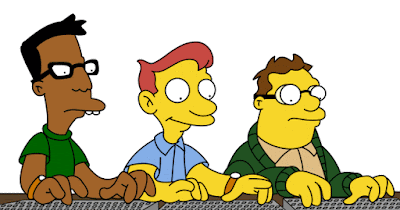Well, since it's Memorial Day weekend, I'm back to my summer job at the beach. I love my summer job, and one of the reasons is because it affords me large chunks of time to catch up on my reading.
Here are the books I managed to read.
Everyone's talking about Everything, Everything now because the movie adaptation is currently in theaters. I liked the book, but I probably won't rush to see the movie. I just feel like the story is fresh in my head, so I'll probably save the movie until I feel like revisiting it.
I hadn't read a middle grade book in some time, because I've been reading so much YA and adult fiction, so I decided I need to read some so that I'm equipped to make summer reading suggestions to the kids in this month before school ends. Olga and the Smelly Thing From Nowhere is a heavily illustrated read, not quite a graphic novel, but the illustrations are much more present and larger than Diary of a Wimpy Kid or similar titles. At first I wasn't sure what to make of this book because it's so ridiculous; Olga is a little girl who loves animals, and one day she finds some animal that she can't identify. It doesn't sound that weird, until she says that he poops out Skittles. Wait, what? There are many more instances of absurd bathroom humor, like Fart Balloon and Nacho-Scented Toilet Paper, but eventually I just got used to it, and chuckled as I read.
I've been in a historical fiction rut for months now, so I decided to fix that by checking out To Stay Alive, a novel in verse which is narrated by Mary Ann Graves, one of the members of the Donner party.I know what the Donner party was, but I never did much research on it, so this was a really interesting and informative read. The portions of the text that refer to the claims of cannibalism are not graphic, focusing instead on Mary Ann's internal struggles with her will to survive and her moral beliefs. The part that affected me the most is when the pioneers realize that they are not making good time in their journey, and they start to lighten their loads. They leave behind tools, cooking skillets, trunks of clothing, furniture: anything that might help make the wagons lighter and faster- that part in the story is when I could feel the desperation setting in for these doomed people.
After the grimness of a story about the Donner party, I wanted to go back to something lighter. The Lunch Witch is a graphic novel that was a fast and funny read. Grunhilda is forced to take a job as a lunch lady the local elementary school. As much as she tries to stay true to her witchy ways, she ends up liking one of the students (it happens).
This book is the story of Sachiko, who survived the atomic bomb dropped in Nagasaki, but it's more than just that. Rather than focus on the bomb itself, Stelson develops a narrative that emphasizes the price of peace. She begins by providing a tiny piece of information on the European politics prior to World War II, and the narrative includes information on Gandhi, Helen Keller (who visited Nagasaki after the bombing), the Korean War, and the Civil Rights movement. The end result is a beautifully written non-fiction book that has some horrifying parts of history, but is deeply reflective and remains hopeful.
"Every word is precious.
One word can make you feel loved.
One word can hurt. One word can make you cry.
One word can break your heart.
One word can do so much damage.
One word can do so much good.
Even one word can lead people.
One word can protect world peace.
Every word is precious."
-Sachiko, p. 112





























